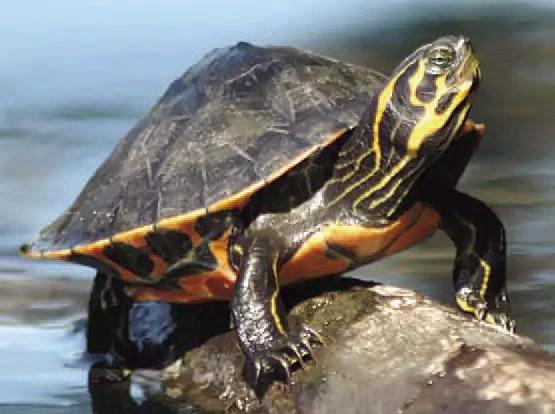Cooter needs our help!
Florida’s freshwater turtles have been battling a virus of their own since before the coronavirus pandemic. The virus, designated turtle Fraservirus 1 (TFVA), can be deadly to turtles, and the Florida Fish and Wildlife Conservation Commission is asking the public’s help to report sightings of turtles that are sick, showing abnormal behavior, or are dead.
Locally, turtles testing positive for the virus have come from both Lake Tohopekaliga and East Lake, as well as other water bodies in Osceola County. Whether you venture into wild, natural Florida on a frequent basis, are a regular or occasional user of our area’s two huge lakefront parks, or often see turtles around retention ponds in your neighborhood, you can help.
”The disease first showed up in the St. John’s watershed in 2018 and is now in nine central Florida counties, including Osceola, Polk, and Brevard. We are working to get a more in-depth survey funded to try to understand how extensive the virus is,” said Dr. Becky Hardman, a wildlife veterinarian for the FWC.
The FWC recently launched a new online website to report sick, abnormal, or dead turtles. This data will assist staff and partners as they work to better understand TFV1. Given the distances inside the affected area, and the vast natural areas, having pictures of suspected ill or dead turtles is the greatest help to the FWC researchers.
Turtle species affected include cooters, softshells, sliders, and even tough-as-a-tank snapping turtles are susceptible to the TFV1 virus. According to the FWC, there is no current evidence to suggest that humans or wildlife other than turtles can be infected with TFV1, however, Hardman emphasized people should not normally handle turtles, and, if necessary, use rubber gloves.
Possible signs of sick turtles include head and neck outstretched flat along the ground; sunken, swollen crusty, and/or cloudy eyes; and reddened skin on the head, neck, limbs, or bottom of shell. Irregular swimming, such as sideways, in circles, or unable to submerge can also be an indicator of illness.
An Osceola-based reptile rescue and rehabilitation organization, Swamp Girl Adventures, is at the forefront of the effort to rescue and treat sick turtles and works with FWC on a continuous basis. Director and wildlife rehabilitator Kim Titterington routinely gets calls when sick or injured reptiles are discovered in the area and emphasized that moving turtles any distance is never a good idea but is especially bad now with the virus.
“If you see a healthy turtle on a roadway or other dangerous area, get them out of danger, and as close to a suitable body of water in the direction they were heading, if possible. We had one turtle apparently moved 86 miles based on the location it was first microchipped by researchers and then later brought into us,” said Titterington.
For reporting and more information about TFV1, visit MyFWC.com/TFV1.
For more information on Swamp Girl Adventures reptile rehabilitation, see https://bit.ly/3F4hrth.




